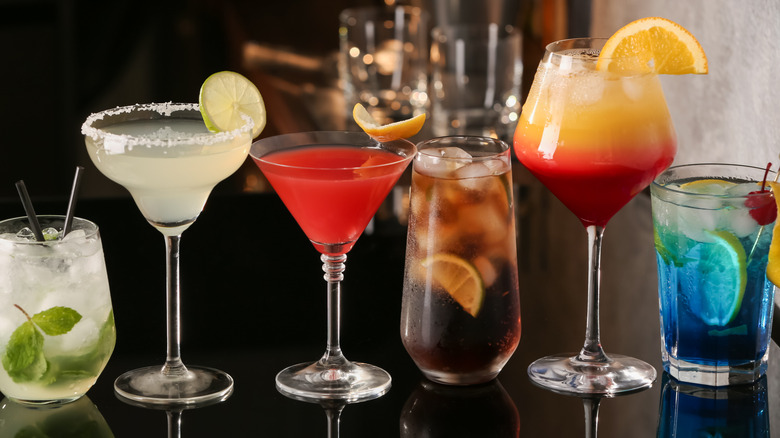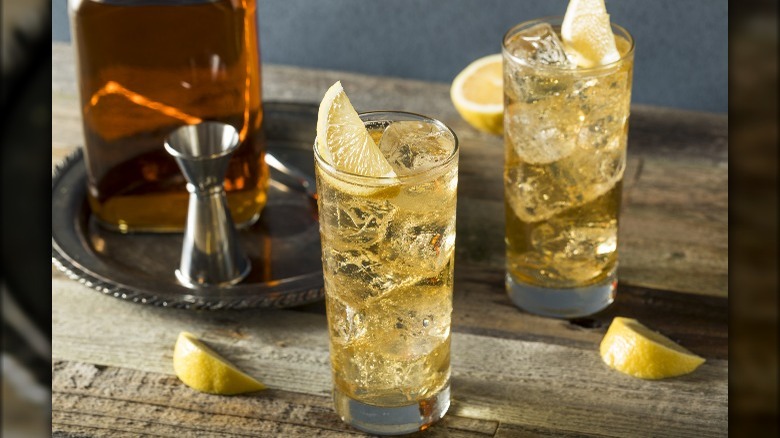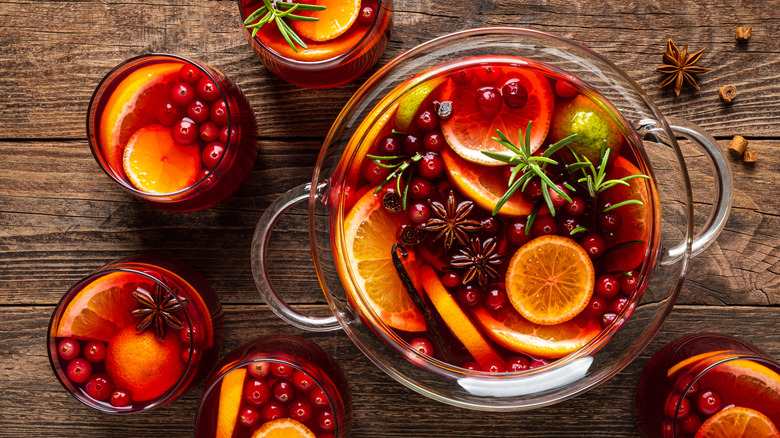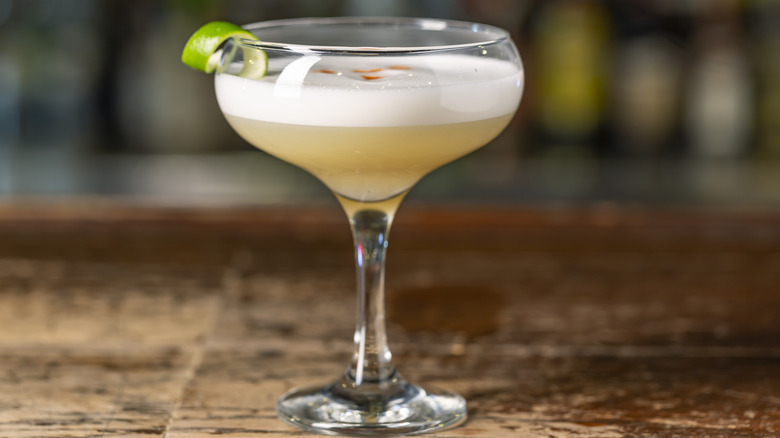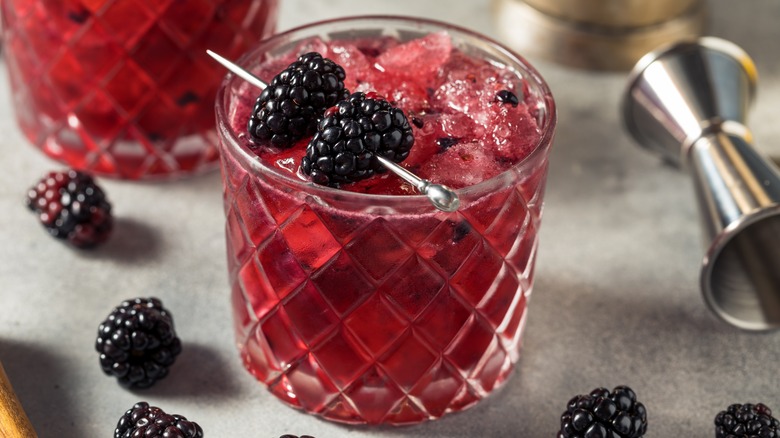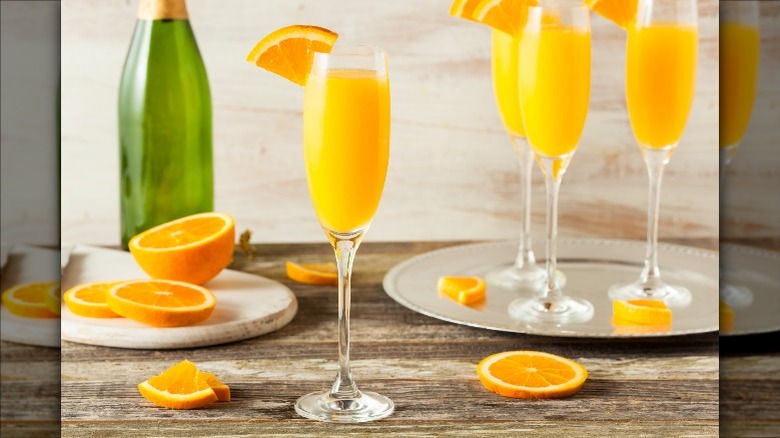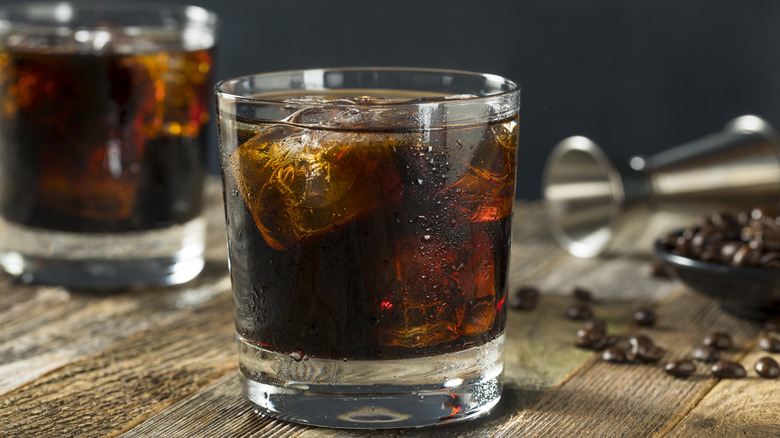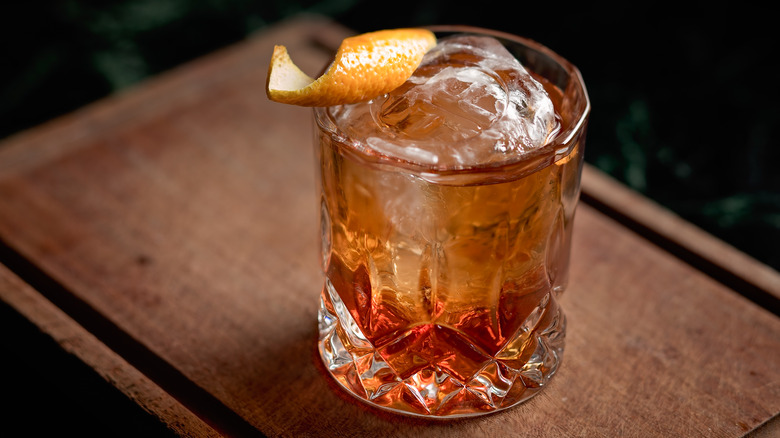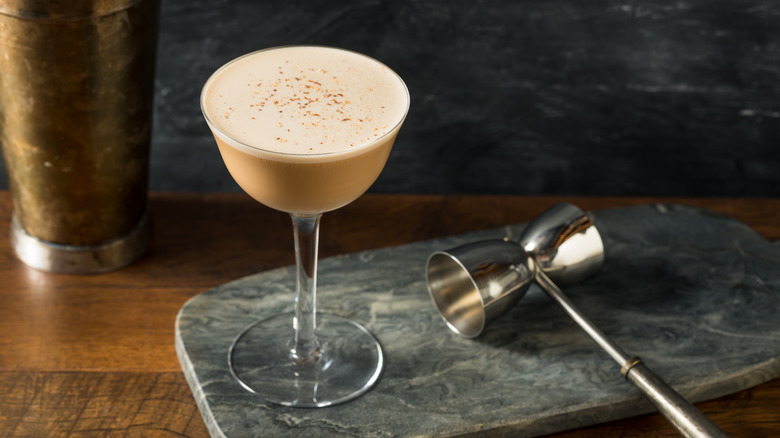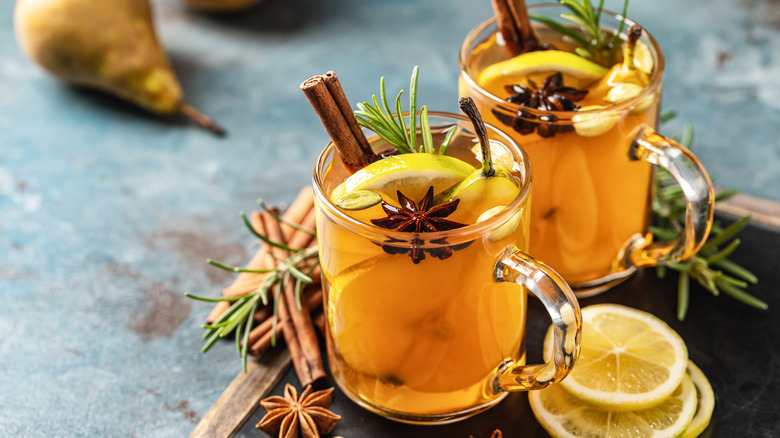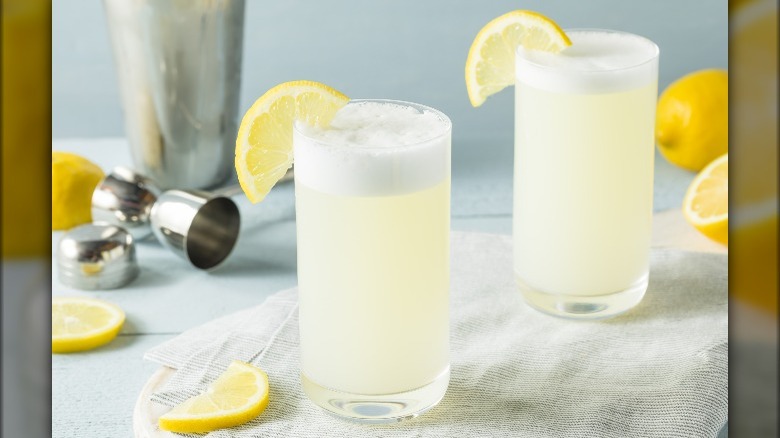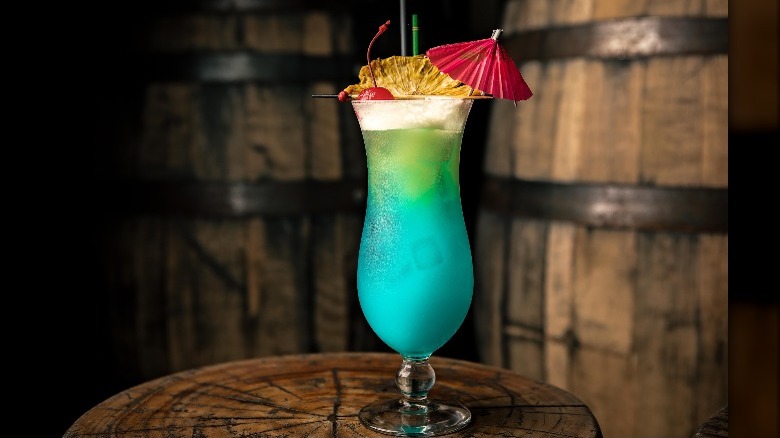Everything You Should Know About Cocktail Families
Beyond your standard beer and wine, there is an entire world of alcoholic beverages known collectively as cocktails. These mixed drinks, which combine various hard liquors with sweet and bitter flavors, come in all shapes and sizes. When it comes to categorizing cocktails, however, it can get much deeper and more complex than simply separating by flavors. That is why becoming a master mixologist requires a considerable amount of time.
Cocktails can drastically change with just a few adjustments, such as whether the drink is shaken or stirred, served on the rocks or neat, topped with a spritzer, served warm or cold ... you get the picture. Because there are so many specificities when it comes to crafting a cocktail, there are quite a few categories or families that the drinks may fall into. Some cocktails fit neatly into one category, while others will be found across several different families, depending on who you ask. And once you are familiar with the basic cocktail families you can learn to make all kinds of classic cocktails yourself, and maybe even create your own variations.
Highballs and Collinses
The highballs and Collinses of the cocktail world are perhaps most recognizable by the tall, narrow glasses that they are typically poured into (via Candra). However, when it comes to crafting a highball cocktail, you will find that a wide variety of mixed drinks fit into this category, making it one of the broader families of cocktails.
When crafting a highball, you will want to start with a shot of your liquor of choice as a base and top it with a mixer (via Cocktail Party App). A recipe for the classic highball for which this category got its name is simple: two parts rye whisky and three parts ginger ale. Substitute gin in for the rye, and add lemon juice and sugar to your highball, and you have made a Collins (via Quarentinis, Eh?). There is actually an entire lineup of Collins variations, but the classic Tom Collins is made with Old Tom gin specifically (via Difford's Guide).
The highball and Collins category is much wider than you may think, with many classic cocktails included in this family. According to Cocktail Party App, if you enjoy a Pimm's Cup, a paloma, a screwdriver, or your simple vodka tonic, then you have meddled in the world of highballs.
Punch
To tell the difference between a punch and any other kind of cocktail, all one typically needs to do is look at how the drink is served. If it comes in a large vessel that is meant to be shared, then you have likely been given some sort of punch (via Amli). Punch cocktails actually have quite the storied history, with Difford's Guide claiming that punch is considered by many to be the original cocktail.
When crafting a punch, it is essentially the maker's choice, though Difford's Guide points out that there are typically a few flavor components you will want to include when making a traditional punch — sweet, sour, spice, and spirit. These days, a good punch can include just about anything you want, but the key here is to make a large quantity of it so it can be shared with your friends. Some examples of punch include rum and brandy-based drinks like the Ferdinand & Isabella's Punch, or red wine-based drinks like the Daniel Webster's Punch (via Punch Drink).
Sours
Whereas some cocktail families are determined based on the vessel the drinks are served in (like highballs) or the serving size of the drink itself (like punch), sours, both simple and complex, are usually recognized by the ingredients used and their proportions. According to Cocktail Party App, the sours contain three components: two parts of your base liquor, three-quarter part sour, and three-quarter part sweet. And in most instances, the sour component is either lemon or lime juice, according to A Couple Cooks.
Most simple sours follow the above formula. For example, a classic whisky sour contains whisky (the base), lemon juice (sour), and simple syrup (sweet). Another traditional simple sour is the daiquiri, made with light rum, lime juice, and simple syrup. Other classic sours include sidecars, the pisco sour, and even the traditional margarita, which is made with a base of tequila, lime juice as the sour ingredient, and simple syrup adding sweetness.
Cobblers
How do you know if you are drinking a cobbler? Traditionally, your drink will be poured over crushed or "cobbled" ice, hence the name (via Punch Drink). Another distinction when it comes to cobbler cocktails is that they come as James Bond would prefer them: shaken, not stirred (via Difford's Guide). A third sign to be on the lookout for when identifying a cobbler is the presence of a straw. In fact, according to Difford's Guide, the straw was introduced originally for drinks such as the cobbler, where the abundance of ice would otherwise chill your lips in an unpleasant way as you drink.
What else besides crushed ice, a straw, and shaken ingredients does it take to make a cobbler? According to Difford's Guide, these cocktails are typically wine-based with an added sweetener, but there are other variations. For example, a traditional bramble is a cobbler cocktail made with gin, lemon juice, and simple syrup, along with blackberry liqueur. (via Punch Drink).
Champagne cocktails
There are few surprises with this family of mixed drinks. Champagne-based cocktails are exactly that — typically sweet, tart sparkling drinks that combine liquors with a bit of fizz, either in the form of sparkling wine or Champagne. One of the most recognizable drinks in this family is the French 75, which is made with gin, lemon juice, simple syrup, and sparkling white wine (via Cocktail Party App).
Other champagne cocktails contain even fewer ingredients than that. For example, the classic Kir Royale comes with sparkling white wine and crème de cassis (via Cocktail Party App). Even the classic Mimosa falls into this category, typically made with orange juice, champagne, and triple sec if you happen to have it on hand — though it is not a necessity (via Cocktail Party App). You'll find that there are a lot of cocktails that fall under this family, as your drink truly just needs a spritz of champagne or sparkling wine on top to be considered part of the category.
Duos and trios
Many cocktail families have long histories, with classics like punches, sours, and highballs going back hundreds of years. Duos and trios, however, are a more modern-day take on mixed drinks. According to Drink Magazine, a duo is deceptively simple. A spirit and liqueur is all you need. Add a dairy element, such as a cream liqueur, and you have a trio. The concept was brought about by the late Gary Regan, who wrote the book "Joy of Mixology: The Consummate Guide to the Bartender's Craft."
Both classic and new-age drinks fit into the duo and trio category, including the traditional gin martini, considered a duo with its two ingredients, gin and vermouth (its iconic olive counts as a garnish). Black Russians are also considered duos, according to Drink Magazine, with vodka and coffee liqueur as the sole ingredients. Add in some cream, and you have the trio that is the White Russian. You may be surprised at how much customization is possible with just two or three ingredients. Try experimenting on your own, mixing different brands of spirits and liqueurs, trying the drinks shaken and stirred, and serving with or without garnishes.
Juleps and smashes
The mint julep likely comes to mind first when considering the drinks that fall into the juleps and smashes category, but this family of cocktails is actually much broader than that when you consider what qualifies a drink to be a julep. According to Vine Pair, the original julep consisted of brandy, sugar water, and mint, but the classic mint julep associated with the Kentucky Derby calls for bourbon instead of brandy. Today, a drink could be considered a julep if it is made with a spirit, a sweetener, and an herb (via Mashed). Beyond the mint julep, examples of drinks that fall into the julep category include Champagne juleps, grapefruit juleps, and Heather juleps (via Difford's Guide).
And simply adding a citrus component is all it takes to turn a julep into a smash. The classic smash is actually made with the typical ingredients for a mint julep, along with some lemon juice added (via Cocktail Party App). And you'll find many a cocktail that falls into both the julep and smash category.
Stirred (or spirit-forward) cocktails
You will find a lot of classic cocktails in the stirred family, sometimes known as the spirit-forward family of drinks. There are different opinions on which drinks fit into this category, depending on who you ask. But essentially, you won't find many citrus or dairy ingredients for the most part, though there are some exceptions (via Liquor.com). If it has the three basic components of a cocktail (a spirit, sweetener, and bitters, according to Cocktail Party App) and it is stirred instead of shaken, then it arguably fits into this category.
You can have a ton of variation in this category, but it is where you will likely find most, if not all, of the classic cocktails. With that in mind, some of the tried-and-true cocktails in the stirred or spirit-forward category include the old fashioned, the negroni, the martini, the Manhattan, and the sazerac, just to name a few. Long Island iced teas are also considered part of the stirred family, though they do have the added citrus component (via Liquor.com).
Flips, fizzes, swizzles, and smashes
Remember when we said that you will likely find some overlap when categorizing cocktail families? Well, it's also true that almost every school of thought when it comes to categorizing cocktails usually includes some sort of miscellaneous category. Enter flips, fizzes, swizzles, and smashes.
Liber and Company places these four types of cocktails in their own category because they are all lesser known or are offshoots of other drink families. For example, a fizz adds a spritzer of some kind to sour cocktails and can be served up or on the rocks, whereas a swizzle is a classic sour poured over crushed ice. A flip contains an egg yolk in addition to classic cocktail ingredients, a base spirit and a sweetener (via Amli). Liber and Company also groups smashes into this category, which are considered by many to be a variation of a julep with an added citrus component.
Hot drinks and toddys
As the name implies, just about any cocktail that is served warm will fit into the hot drinks category. This also includes toddys, which grew in popularity in the 1800s for supposed health purposes due to the drinks' soothing properties — likely thanks in large part to the heat (via Cocktail Party App). The core components of a toddy are a spirit, a sweetner, and hot water (via Amli). The more commonly known recipe for a classic hot toddy usually contains whiskey, lemon juice, honey, and a mixture of spices.
From there, you can make variations of the toddy, including the rusty apple toddy, made with hot apple juice, lemon juice, and whisky (via Cocktail Party App). There are a few buttered versions of a toddy too, including the hot buttered rum, which also falls into this category. This classic and comforting American cocktail is made with melted butter, brown sugar, nutmeg, and aged rum (via Cocktail Party App).
There are also plenty of non-toddy drinks that are served warm as well. Some examples include Irish coffee, which is made with coffee, Irish whisky, and simple syrup (and usually topped with whipped cream), and the bullshot, with a more complex list of ingredients that includes vodka, beef broth, lemon juice, black pepper, celery salt, Worcestershire sauce, and a dash of hot sauce (via Cocktail Party App).
Creamy cocktails
Does your cocktail have a dairy component added into the mix? If so, then it fits in the creamy cocktail family. These drinks are smooth and rich in flavor, just like your favorite dessert – only better because they're boozier. Everything from milkshakes with added shots of alcohol to classic frothy cocktails like piña coladas, mudslides, and white Russians are found in the creamy cocktails family (via Tipsy Bartender). And speaking of piña coladas, it's worth noting that not all creamy cocktails necessarily contain dairy in the form of cream or milk. The traditional piña colada is made with plant-based coconut cream. But double checking with the bartender is still a good idea if you have any dairy intolerances.
Some, but not all drinks in the creamy cocktails category are made with eggs. Similar to flips — which are spirits and sweeteners mixed with egg, via Liber and Company – cocktails made with eggs are double-strained in order to achieve that creamy texture we all know and love (via Cocktail Party App). Some classic creamy egg drinks include the gin fizz, made with gin, lemon juice, simple syrup, sparkling water, and half an egg white; the golden fizz, which swaps out the egg white for a whole, lightly beaten egg; and the rum flip, which features rum, brown sugar, nutmeg, and a whole egg (via Cocktail Party App).
Tropical cocktails
The tropical family of cocktails includes all of the usual suspects that you would find at your local Tiki Bar. Bahama mamas, grogs, painkillers, and zombies are just some of the flavorful and colorful beverages that make up the tropical category. But what exactly makes a drink tropical? It is usually accompanied by a fruit flavor of some kind, like orange, mango, or pineapple. But don't simply write off tropical cocktails as sugary dessert drinks, because the authentic recipes are actually quite sophisticated (via Cocktail Party App).
Tropical drinks are filled with color, with floral garnishes adding even more vibrancy. Try drinks like the Singapore Sling, made with gin, cherry brandy, herbal liqueur, triple sec, pineapple juice, lime juice, grenadine, and aromatic bitters. Or, sip on a Blue Hawaiian, made with light rum, pineapple juice, blue curaçao (a common ingredient in tropical drinks) and coconut cream. Tropical drinks can have a wide array of spirit bases and sweeteners, much like we have seen throughout this roundup of cocktail families. But when you're sipping on a tropical cocktail, you might feel a little bit more like you are on vacation.
